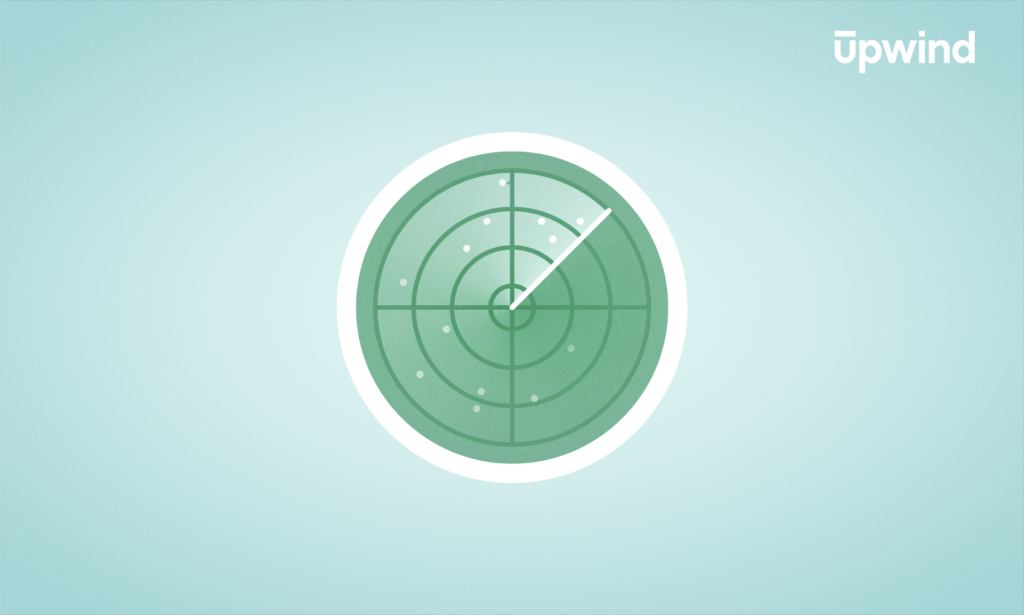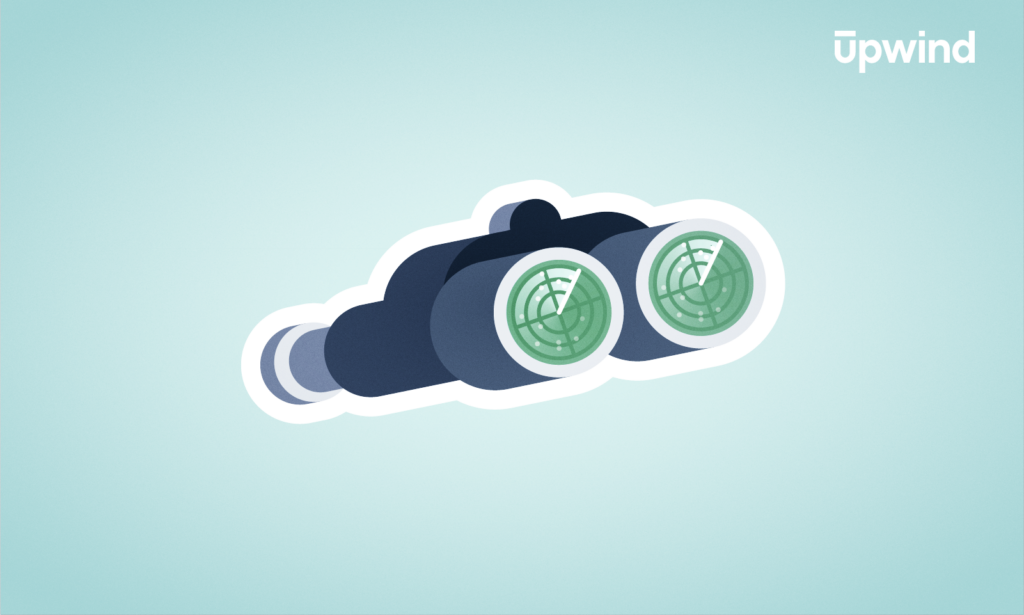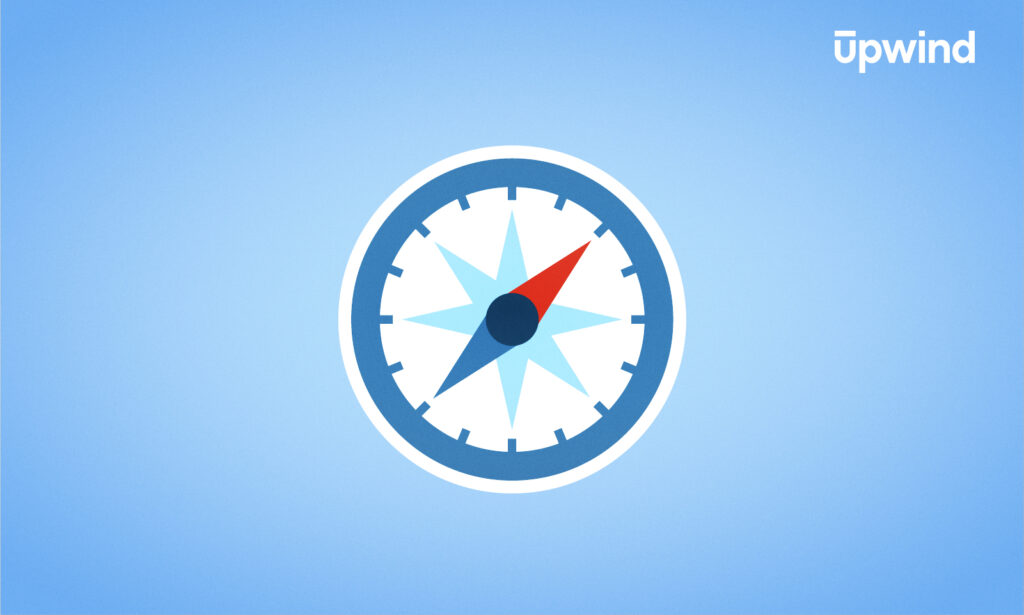
Some of the earliest cloud security solutions were cloud security posture management (CSPM). Today, modern CSPM is still a cornerstone of cloud security, but many teams worry about how they’ll integrate CSPM functions with all the other security tools their growing cloud architectures require. This article will deep dive into the role of CSPM in cloud security, including key features that organizations should look for when evaluating tools.
What is Cloud Security Posture Management (CSPM)?
Cloud Security Posture Management (CSPM) is a set of practices to monitor configurations across a cloud environment. It includes using tools to help companies account for assets, detect misconfigurations, and address security risks automatically.
In public cloud environments like Amazon Web Services, Google Cloud Platform, Oracle Cloud infrastructure, Microsoft Azure, or even a multi-cloud combination, CSPM tools detect misconfigurations caused by both internal actions and changes from cloud service providers. They quickly handle issues such as excessive permissions, unused resources, and encryption failures.
How Important is CSPM?
CSPM is foundational in cloud security. The modern business landscape increasingly relies on cloud solutions to enhance agility and support digital transformation efforts. However, as organizations scale their cloud infrastructure across multiple providers, they face greater security challenges. CSPM tools have become a key part of the security strategy, helping DevSecOps deploy more secure products without more time-consuming processes. That helps teams stay afloat in an expanding cloud architecture.
“Seventy-five percent of companies today have adopted a multi-cloud architecture, up from 49% in 2017,” according to Gartner.
Companies that want applications, data, and workflow to scale efficiently and reach a global audience increasingly deploy key business functions in the cloud — often in several. As they harness the specific advantages that different platforms have to offer, they have utilized CSPM to make their ever-more complicated spaces secure.
What are the Benefits of CSPM?
With CSPM, DevSecOps gains several benefits, which we will dive into below.
Visibility into cloud resources
CSPM offers a window into cloud stacks from a single location, including changes made to any and all cloud resources.
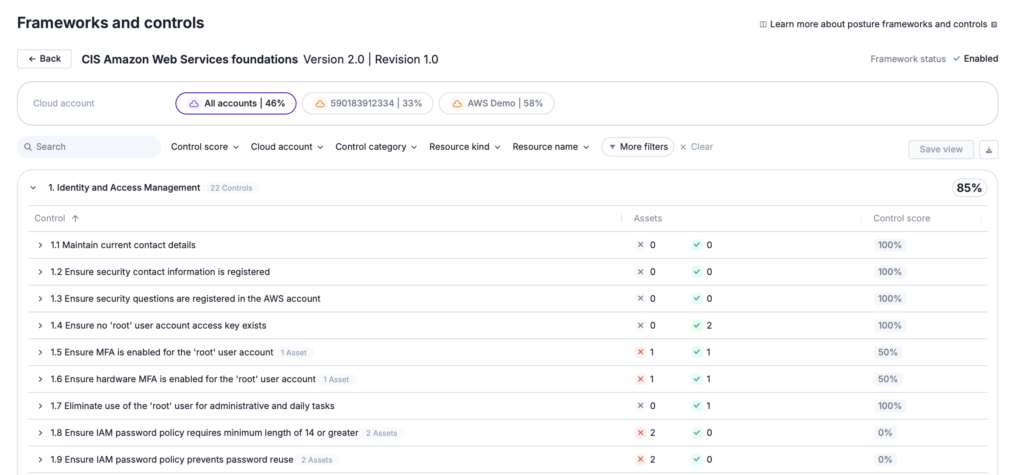
The centralized visibility reduces the manual effort required to track down misconfigurations. It also accelerates the identification of policy violations or drift, so teams can enforce governance before incidents propagate across the environment.
Ability to identify security issues
CSPM can quickly identify security issues in areas from encryption to storage buckets and permissions.
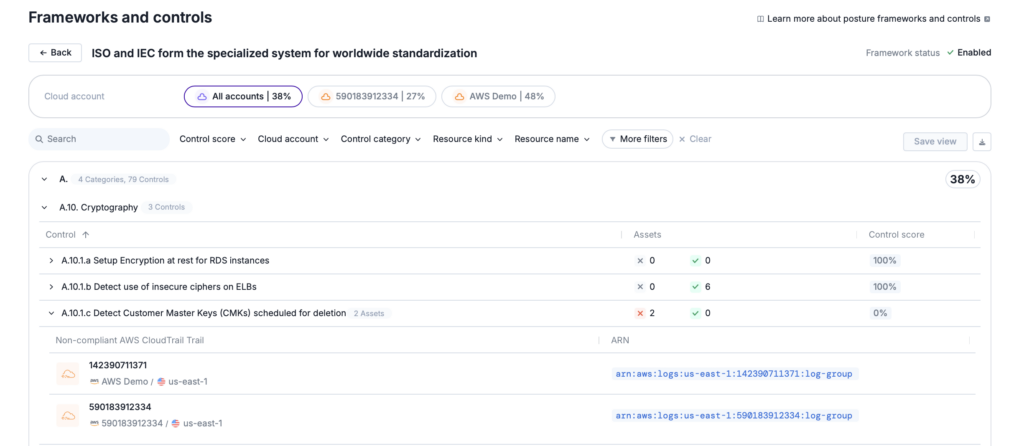
By automating the detection of misconfigurations, CSPM reduces human error. It also provides actionable insights so teams don’t spend time chasing less critical issues.
Risk prioritization
CSPM comes with the power to prioritize so teams can address high-risk issues right away.
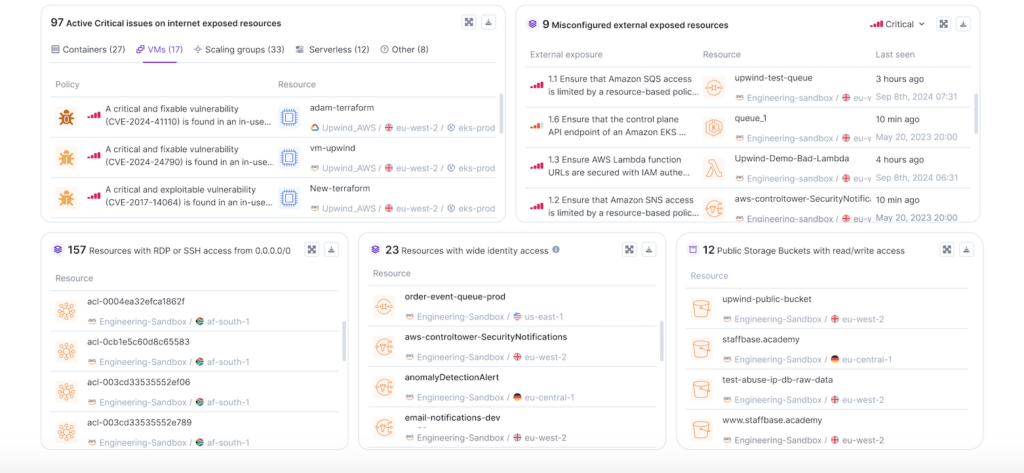
By leveraging risk-based analysis, CSPM ranks misconfigurations based on their potential impact. While CSPM can’t make this assessment based on behaviors of your environment and assets without help from other tools, a stand-alone CSPM can help direct teams to some of the most critical threats.
Compliance enforcement for security posture
CSPM allows for enforcing policies and security requirements, like who can access data in a secure cloud.
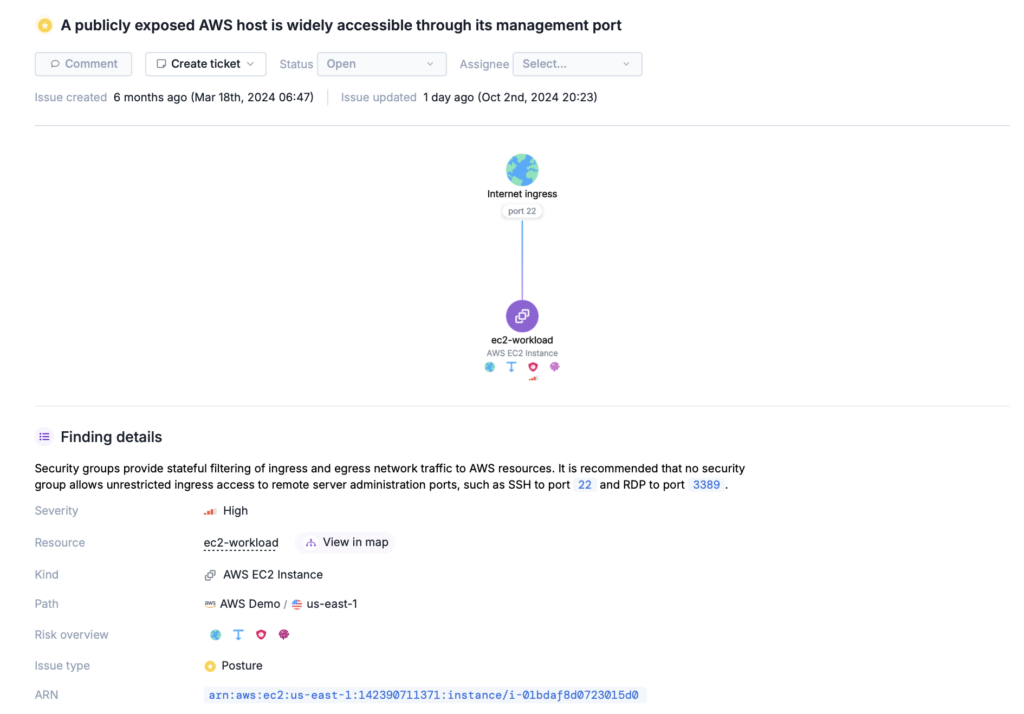
It automates enforcement by monitoring for misconfigurations, including encryption settings, storage permissions, and network configurations to comply with security standards.
Reporting to stay compliant
CSPM keeps track of security policies taken, incidents, and remediation for security audits and allows easy reporting.
CSPM simplifies audit trails with streamlined reports to make manual tracking a thing of the past.
How does CSPM Protect Security Posture?
A CSPM adds to cloud security management and helps remediate cloud misconfigurations in three core ways:
- Automated security assessments
- Compliance checks
- Remediation
Let’s look deeper at example scenarios where the features of a CSPM can help.
Features of CSPM and their scenarios
Here’s a look at how each function of a CSPM might work in the real world to alert teams or remediate an issue.
| CSPM Function | Example Scenario | Outcome |
|---|---|---|
| Automated Security Assessments | A new storage bucket is created without encryption enabled. | CSPM automatically flags the bucket as a security risk and alerts the security team. |
| Compliance Checks | A company needs to comply with GDPR regulations for data handling. | CSPM continuously checks cloud configurations against GDPR requirements, generating reports for auditors. |
| Risk Prioritization | Multiple misconfigurations are detected, including open ports and weak encryption. | CSPM assigns higher risk to the open ports, prioritizing their remediation based on potential impact. |
| Contextual Risk Analysis | A publicly exposed database is detected alongside misconfigured IAM roles. | CSPM recognizes the combination as a critical risk, escalating the issue for immediate resolution. |
| Automated Remediation | A misconfiguration allows unnecessary access to a cloud resource. | CSPM automatically revokes the unnecessary access, ensuring compliance with least privilege principles which ensure users have only the access necessary to perform their role. |
Are These Features Unique to CSPM Tools?
CSPM solutions provide what traditional security cannot: a bird’s-eye view of the entire cloud, monitoring access points, permissions, and misconfigurations. While there are a range of security management tools to help with cloud architecture, CSPM solutions are the first and only tools built for the cloud, tasked with managing a completely new environment where multiple accounts, devices, and locations come together to present new security issues and interactions.
Modern CSPM systems have become a critical foundation for securing cloud environments, offering rapid, valuable visibility into configurations and compliance. But as cloud-native applications and threats evolve, visibility alone isn’t enough. The next step is integrating that visibility with real-time insights, runtime protection, and business context to prioritize the most critical risks and eliminate alert fatigue.
Joshua Burgin | CPO, Upwind
That means there are multiple tools that can help with discrete tasks in the cloud, many of which might be confused for a CSPM.
CSPM solutions offer a broad, cloud-specific view of your entire infrastructure, monitoring access points, permissions, and misconfigurations—things traditional security tools cannot address. While many security management tools assist with cloud architecture, CSPM solutions are uniquely built for multi-cloud complexity, where multiple accounts, devices, and locations introduce new security risks and interactions.
As a result, multiple cloud security tools exist for a range of discrete tasks, many of which are sometimes confused with CSPM. For instance, CSPM is often confused with CWPP (Cloud Workload Protection Platforms). Both CSPM and CWPP are critical in cloud environments, but they tackle different challenges.
Runtime-powered CSPM
Upwind offers runtime-powered cloud security posture, combining CSPM findings with real-time, runtime data for increased risk prioritization, proactive attack surface reduction and streamlined DevSecOps.
While CSPM focuses on cloud configuration and security posture, CWPP is designed to protect workloads, providing features like runtime protection, anti-malware, and intrusion prevention. CWPP solutions focus on the computational resources running within the cloud, such as containers, virtual machines, and serverless functions.
CSPM Vs. CWPP and Other Security Management Tools
While CSPM centers on cloud configuration, Cloud Workload Protection Platforms (CWPP) are concerned with workload protection, like runtime and anti-malware protection as well as intrusion prevention. These solutions focus on computational power: the resources running in the cloud environment. Cloud workload security can include components like containers, virtual machines, and serverless functions.
Both CSPM and CWPP work in cloud environments. They can assess organizational structures and unique identifiers to handle tasks in the cloud.
Differentiators to other cloud security platforms
Cloud security confusion often stems from the “Cloud” prefix of multiple cloud security solutions working on different challenges with different features. Here’s a breakdown of other common acronyms in the cloud security space that differ from CSPM.
What are other tools to help secure a cloud environment? There are a few. Here are some acronyms you may have heard:
| What is it? | Deployment Model | Complementary to CSPM |
|---|---|---|
| Cloud Security Posture Management (CSPM) | SaaS | CSPM is foundational security posture management, focusing on misconfigurations in cloud environments. |
| Cloud Workload Protection Platforms (CWPP) | SaaS, on-premise | Enhances posture security by adding protection to the workload layer, ensuring workloads are secure after being correctly configured by CSPM. |
| Data Security Posture Management (DSPM) | SaaS | Ensures data-level security after the cloud security posture is secured. It helps track data compliance and risk. |
| Cloud Access Security Broker (CASB) | SaaS | Enforces access control and data policies by third-party services. |
| Cloud Infrastructure Entitlement Management (CIEM) | SaaS, hybrid | Enhances CSPM with an added layer of identity management. CIEM secures IAM configurations and enforces least-privilege access principles in the cloud. |
| Cloud Native Application Protection Platforms (CNAPP) | SaaS | Encompasses CSPM features as part of a broader cloud security platform that also handles multiple security tasks, including securing workloads. |
Upwind Empowers Organizations with Data Security for their Cloud Infrastructure
CSPM solutions are a front-line defense against security breaches that have increased year over year, breaking records in 2023 when 3,205 breaches prompted companies to up their security spending to their own record levels — companies are projected to spend $215 billion in 2024 to prevent breaches.
“Security must be job zero – embedded into every facet of DevSecOps, from how code is built and deployed to how risks are managed. Organizations need a comprehensive platform that brings together CSPM, runtime, API security, and more to deliver complete, focused protection.”
Joshua Burgin | CPO, Upwind
The growing threat isn’t simply the tenacity of bad actors; it’s the increasing complexity of cloud environments and the difficulty that security teams have to see and fix real issues before they become threats.
Get a better view of your cloud landscape with Upwind. Schedule a demo to see how.
FAQ
Is CSPM part of SASE?
No, CSPM isn’t usually a core component of Secure Access Service Edge (SASE). However, they can complement each other in a holistic cloud security strategy, where CSPM focuses on cloud misconfigurations while SASE provides network security with wide-area networking (WAN).
When is CSPM not enough?
A typical CSPM provides security around misconfigurations and compliance. It doesn’t usually offer real-time threat detection, remediation of active issues, or insight into vulnerabilities, malware, or secrets in cloud workloads. Organizations will also benefit from runtime security, which is why Upwind includes CSPM functions that help secure the cloud, but also workload and app vulnerability management.
What is CSPM in Azure?
CSPM in Azure primarily refers to the cloud security provided via Microsoft Defender for Cloud. Basic features apply to all Azure users, but CSPM capabilities in Azure differ by plan, and CSPM in Azure won’t cover security for other clouds. Users augment CSPM in Azure with 3rd-party CSPM solutions that can offer visibility into multi-cloud environments, advanced runtime insights, and customization.
Is CSPM free?
Some basic CSPM platforms are free, like CSPM in Azure, with basic features for Azure users, or open-source Magpie CSPM. Free CSPM features can include asset inventories and security scores. Paid CSPM solutions offer much more, from flexibility and integration to advanced runtime insights and prioritization of issues based on runtime behavior.
What are the risks of CSPM?
The risks of CSPM stem from tool limitations and security gaps created when tools can’t cover your entire ecosystem. CSPM platforms come with limited scope, focusing primarily on misconfigurations and compliance, so a primary risk is the failure to identify real-time threats and address them quickly. Even with limited visibility, CSPM solutions may lead to alert fatigue, flagging multiple issues without prioritizing those that are truly critical and overwhelming teams tasked with fixing issues.
What is the difference between CSPM and CNAPP?
The difference lies in the focus and scope of each tool: A CSPM handles configuration and compliance. A CNAPP offers broader coverage and can integrate CSPM, cloud workload protection (CWP), runtime protection, and vulnerability management. A CNAPP secures the lifecycle of cloud applications from development to runtime.
What is the difference between CWP and CSPM?
Cloud workload protection (CWP) protects workloads and applications running in the cloud. That includes virtual machines, containers, and serverless functions. However, these cloud components are not the cloud itself. That’s where CSPM comes in. It secures the cloud structure, ensuring secure configurations and managing compliance.

